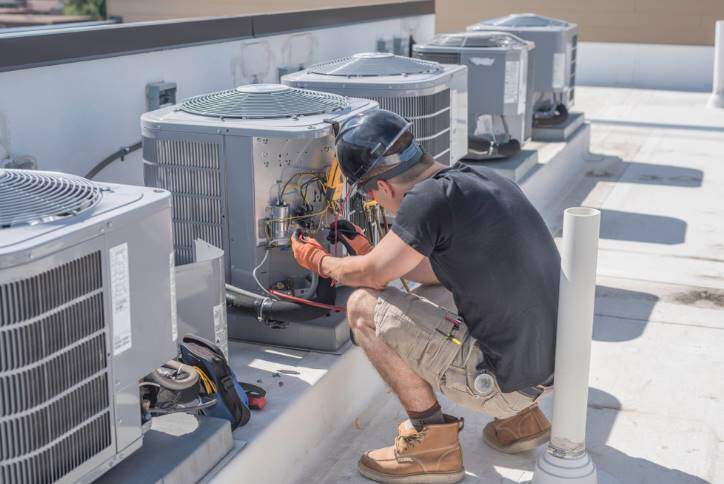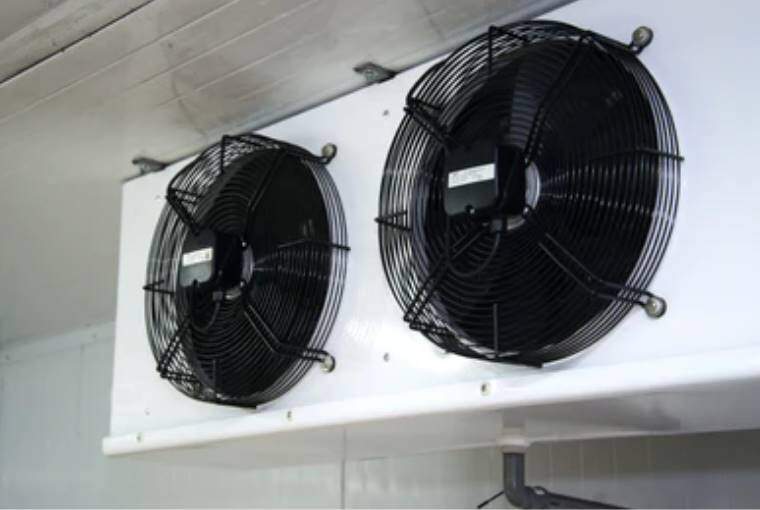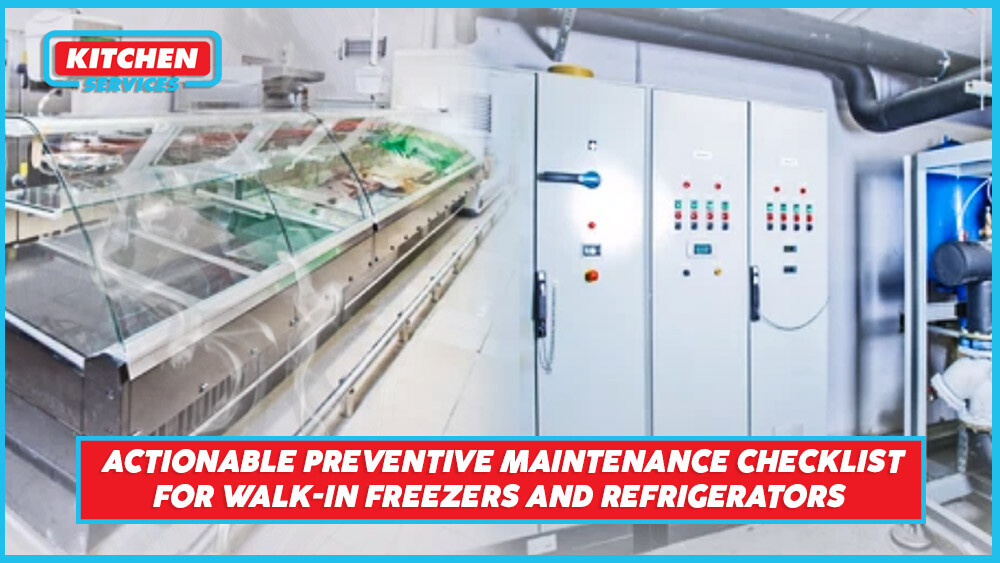Whether you are an owner of a restaurant or you are the lady of the house who is very much possessive about her kitchen appliances, you need to keep one thing in mind. Any mechanical or electrical appliance requires frequent cleaning and maintenance in order to stay effective and function properly. Similarly, when it comes to the maintenance of refrigeration systems; the consequences of not following a consistent preventive maintenance checklist for walk-in freezers and refrigerators can put many things at risk for you.
In the foodservice business, refrigeration systems are crucial. Commercial refrigerators and freezers are a considerable financial commitment for almost all businesses, in addition to being operationally necessary. It’s vital to perform preventative maintenance on your cooling systems in order to avoid them from clogging or breaking down, which could result in ruined or rotten food, among other things.
Given the expensive costs of replacements and walk-in freezer repair and the problems that might arise for a business if these appliances fail, it’s necessary to maintain them properly to guarantee they keep working at their best.
However, amidst a global pandemic, we have seen many small businesses coming to life. These businesses don’t have a big budget at the start of their professional journey. Hence, it gets difficult for them to pay the cost of commercial refrigeration maintenance every month. For that matter, we have come up with some simple yet effective and actionable maintenance checklist for walk-in freezers and refrigerators to follow on your own.
Preventive Maintenance Checklist
Follow this maintenance checklist for walk-in freezers and refrigerators to extend the life of your units.

Thorough Cleaning of Condenser Coils
The entire condensing unit is considered to be the backbone of your system. It is vital to learn how to properly take care of condensing coils for the proper functioning of your unit for years to come.
The coils are visible from underneath or behind the refrigerator unit. These coils can’t do their job correctly when they’re blocked with dust and debris. These coils must be clear in order for the refrigerant that cools the refrigerator to maintain a constant temperature. Below we have mentioned steps for you to follow in order.
- Unplug the Power Supply: To make things easy and safe for you, pull the unit away from the wall after you have disconnected it from the power supply. You will see a toe guard in front of the unit; if your unit’s coils are below it. Gently remove the toe guard to get access from the front.
- Vacuuming of dirt: Now the interior from the front is visible to you. Use a tiny and narrow vacuum, clean the debris and dust that is visible to you. There is a high possibility that you will see a thick layer of dirt around the coils and the area surrounding them. Run the vacuum-type attachment to make its way into the nooks and crannies of the condensing area.
- Brush off the Debris: Scrape and brush away the tough debris and minute particles with a long-handled brush. Cleaning the refrigerator coils requires this step. The initial suction will not be enough to remove all of the debris that has accumulated on the condenser coils. Gently clean the refrigerator condenser coils with the help of a brush directly on the area.
- Final Vacuuming Round: This is going to be your last round of cleaning the coils with the help of a vacuum. This is an equally important step of walk-in cooler maintenance as it will ensure the removal of any remaining dirt and debris particles around your unit.
Cleaning of Evaporator Blades and Coils
The cleaning of evaporator coils and blades is very much similar to that of condenser coils. Cleaning can be done with a brush, pressured water, or a commercially supplied evaporator coil cleaner or mild detergent on a regular basis. Never use a cleanser that contains acids.
For proper use, follow the recommendations on the label. Make sure the product you’re using is approved for the application you’re working on. Make sure to flush the residue and rinse the coil properly.
Inspection of Door Gaskets
The seals should be flexible and should have a tight grip against the cabinet. You may want to have them replaced if they tear or become brittle with age. However, follow this step religiously under the deep freezer maintenance checklist to ensure its proper working.
Begin by checking all four sides of the gasket surrounding each of your equipment’s doors. You’re looking for any cracks or tears in the gaskets that could be allowing warm air into the equipment’s interior. If your doors aren’t properly sealed, your machinery will have to work harder to maintain the proper temperature inside.
Examine Door Hinges and Latches
Door hinges and latches are one aspect of refrigeration equipment maintenance that is frequently disregarded. Unfortunately, making sure the rest of your equipment is in good working order won’t help if the doors won’t stay closed and latched.
Similarly, defaulted latches and door hinges are an invitation to warm air to get into the refrigeration system and disturb its functioning. Hence, it is very important to frequently examine your door hinges and latches with proper alignment.

Inspect Fans and Fan Grills
Both of these are crucial parts because they are in charge of delivering cool air. Check for the following points:
- Make sure each fan spins freely and softly.
- Any fan motor that does not rotate smoothly or creates an odd noise should be replaced.
- Check and tighten all fan set screws if necessary.
- Look for evidence of stress or wear on all fan blades.
- Any worn, broken, or bent blades should be replaced.
- Double-check that all fan motors are properly secured to the motor rail.
- If necessary, lubricate motors.
The fans in your refrigerator will have unlimited airflow if you follow a refrigerator maintenance checklist.
Maintaining Drain Lines
People often ignore this part. However, we are assuring you to thoroughly keep a check on drain lines if you want to extend the life of your unit. Although cleaning of drain lines can be done on your own, if you are new to this, seek help from an expert by asking him to perform it in front of you and then get an idea.
Examining the Electrical Wiring and other Components
Examine all wiring for signs of wear, kinks, exposed spots, and discoloration. Any damaged wire should be replaced. Double-check all electrical and ground connections for tightness, and tighten as needed. When using fan cycles and defrost controls, make sure they’re working and adjusted.
Keep an eye out for unusual ice patterns and adjust defrost cycles accordingly. Check the actual amp draw of the defrost heater against the unit data plate. Check heaters visually for even surface contact with the coil.
These all steps are basic yet people often forget to perform them. It is required highly to cover all of these under the preventive maintenance checklist.
Inspect Temperature Settings Regularly
Keeping a constant eye on your temperature settings will save you from the hassle of changing the temperature settings every then and now. This is what happens when the thermostat gives up on you. To make sure your refrigeration unit performs at an optimal level, you are supposed to inspect defrost frequency and temperature controls regularly.
In case you are setting your thermostat extremely low or even if you try to defrost it repeatedly, then it can result in making your set-up work two times harder. This will not only increase your electric bills but will also shorten the lifespan of your unit. Similarly, setting it too high can cause chances of bacterial growth inside the unit, causing your food to rot.
For starters, these are some of the most important points you need to check under the preventive maintenance checklist for walk-in freezers and refrigerators. It is advisable not to skip any step.
Also Read: How to Stop Mold Growth in your Walk-in Freezer
Common FAQs About Walk-In Freezers and Refrigerators Maintenance
Do refrigerators need regular maintenance?
Keep your refrigerator running like new by performing these quick tasks. A refrigerator is an expensive appliance that most of us use without much thought. However, like most appliances in a home, fridges require some routine maintenance.
Cold room maintenance checklist?
Daily Cold Room Maintenance Checks and Cleaning
- Spillages should be cleaned up Immediately
- Check the cold room temperature is correct for your products
- Inspect the evaporator for a build-up of ice
- Check the compressors in the walk-in cold room for oil leakage
- Check the Freon levels in the cold storage room

